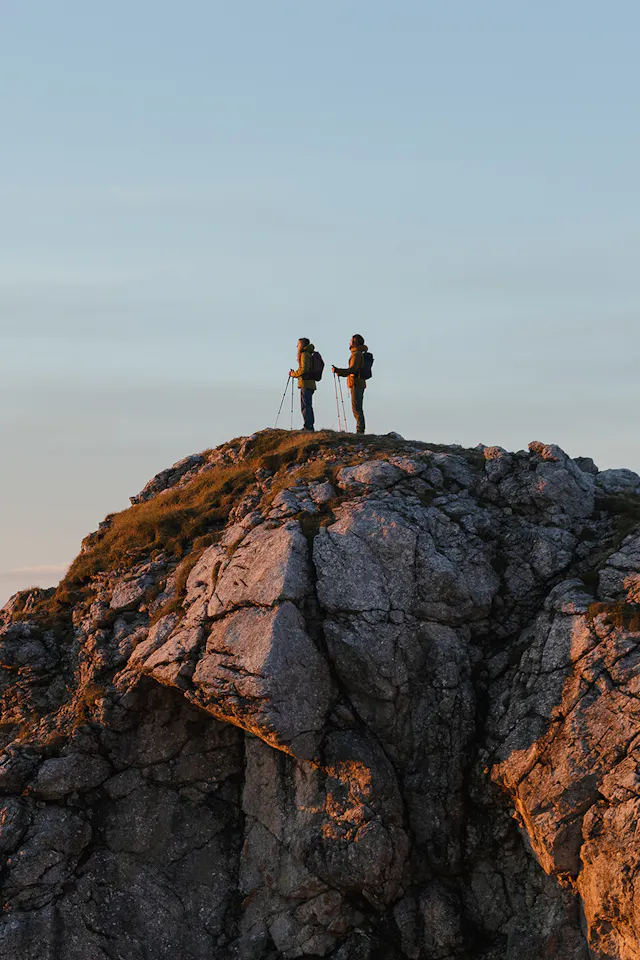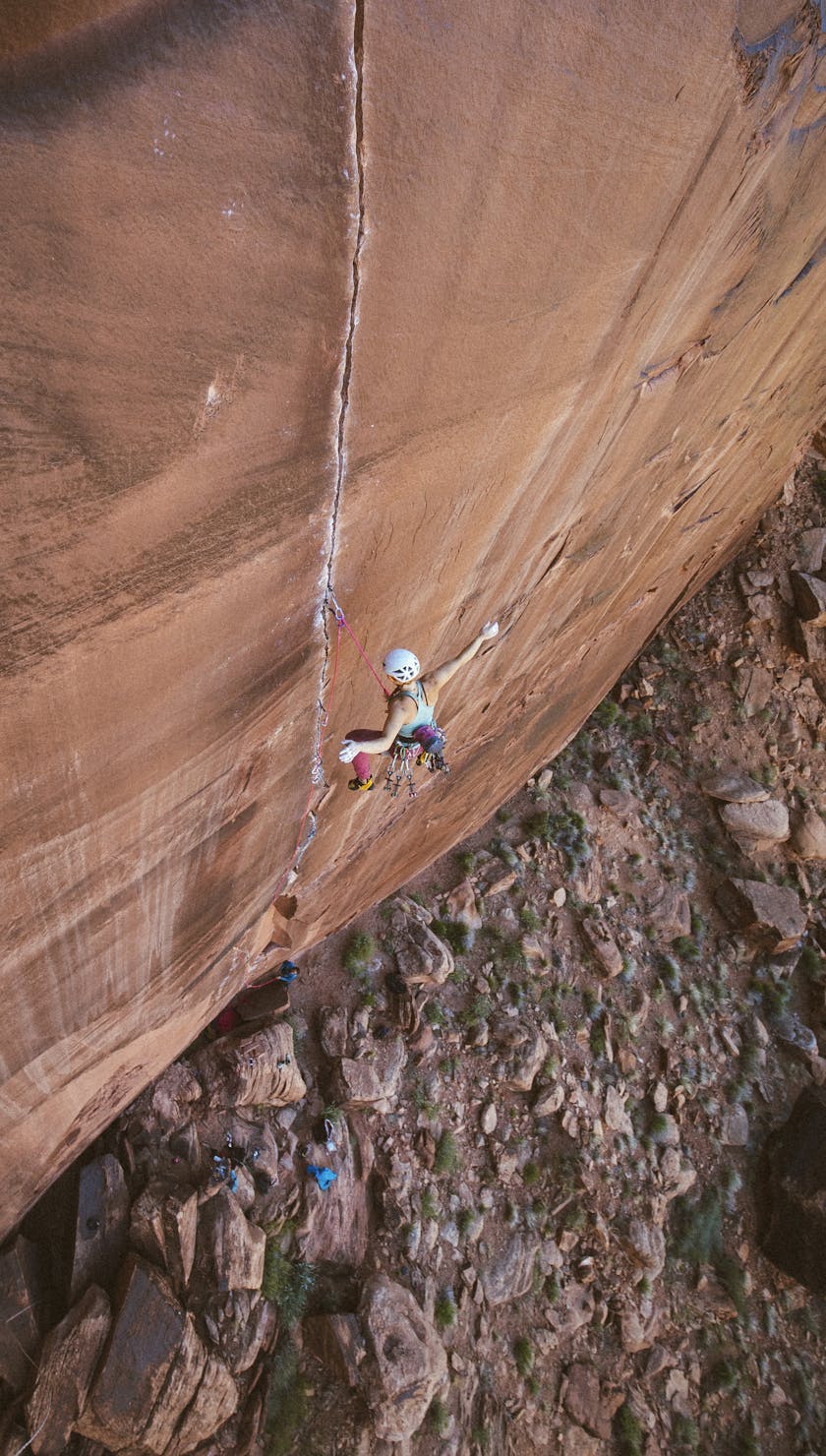Before any piece of Black Diamond gear makes it on to the shelves, it spends months, sometimes years getting put through the wringer by our Director of Quality, Kolin Powick, and his team of Quality Assurance engineers. Through extensive and meticulous testing, both in the lab and in the field, KP and his team help ensure that you can count on your BD gear to be as durable, reliable and as strong as possible every time you head into the mountains or out to the crags.
Climber on belay
A few weeks ago I was at a local sport climbing cliff when one of my buddies came up and asked if I would mind him posing a "technical-sciency-engineering-like-type-question." He wanted to know why each fall he took while working his "proj" felt progressively more painful. I mentioned the old adage from Freedom of the Hills as well as numerous climbing magazines about letting your rope 'rest' between harsh falls, or even switching ends before trying that crux move again. This of course is to reduce the loads experienced, which can become especially critical when climbing on sketchy gear. The rope is the number-one piece that helps absorb energy in the system by elongating—and like stretching an elastic, it needs time to relax between loading scenarios so that it can absorb the maximum amount of energy the next time. My friend looked at me, obviously not having a clue what I was talking about.
He went on to ask if there was anything else he could do to reduce the pain his kidneys feel, and minimize the load the gear sees. My smartass answer was don't fall. No fall equals no load. But on top of that: ensure a dynamic belay, use a cord with high elongation, loosen your knot slightly after each fall (as the knot absorbs energy by tightening during a fall), let the rope rest between attempts, and use nylon slings and quickdraws which absorb a bit more energy than spectra/Dyneema (which doesn't stretch).
To try to put some numbers to it, myself and a few of the QA engineering guys and gals dreamt up a quick test plan and headed down to the drop tower for an afternoon. We figured we'd try to see what the difference in loads seen on the top piece of protection were when:
- performing successive drops as quickly as possible on the same rope
- resting the rope for 30 minutes between whippers
- loosening your knot between whippers
- letting the rope rest for 2 hours between whippers
- letting the rope rest for a full day between whippers
Graph of before and after drop
Typical disclaimer: This is not intended to be a full-blown, PhD-level thesis; rather it's a mini science experiment. There is obviously much much more that one could do to expand on this. These limited data points and one page summary are intended just to give climbers some food for thought. That's all.
TEST SETUP:
- BD drop tower (not UIAA legit)
- 80kg rigid steel mass
- STATIC belay (this is critical because though not typical or realistic, it is repeatable and allows us to isolate the variables we're interested in)
- 10.5mm rope (new)
- Chain used as quickdraw
- Typical lead fall setup scenario
- Fall factor: 0.26
Baseline Testing (rope resting 5 minutes between drops)
- Using one section of rope in the test setup described above, the mass was dropped, and load (at the top piece of gear) recorded.
- The mass was subsequently lifted back to the same height and dropped again at the 5 minute mark.
- This was repeated for 10 drops.
Loosening Knot
- As the loads are relatively harsh during this test setup, we found that we could not easily untie the knot, therefore we decided to place a carabiner within the figure-8 knot on the mass. This allowed the knot to be untied after each fall.
- As above, the mass was subsequently lifted back to the same height and dropped again at the 5 minute mark
- This was repeated for 10 drops
Rope resting 30 minutes between drops
- Same as the baseline testing above however the rope was allowed to rest 30 minutes between drops
- This was repeated for 10 drops
Rope resting 2 hours between drops
- Same as the baseline testing above however the rope was allowed to rest 2 hours between drops
- This was only repeated for one drop
Rope resting 24 hours between drops
- Same as the baseline testing above however the rope was allowed to rest 24 hours between drops
- This was only repeated for one drop
RESULTS
Graph of results from drop experiments
Results of 2nd drop time study
OBSERVATIONS
- As expected, progressive drops resulted in increasing forces
- The largest increase was from the 1st to the 2nd drop as expected
- Loosening the knot after each fall reduced the load a bit, but not much
- Letting the rope rest 30 min between drops had a bigger effect at lowering loads than loosening the knot, but still not much
- Allowing the rope to rest for 2 hours and 24 hours had an even greater effect at reducing the loads on the 2nd drop, as expected
- Allowing the rope to rest 24 hours still resulted in a 2nd drop load of 11% greater than the first drop
CONCLUSION
Loosening your knot, or letting the rope rest prior to a fall reduces the impact load on the top piece of gear by a small amount. However, using a different rope for each burn or switching ends of the rope would provide a greater benefit. And of course the best way to keep the forces on the top piece of gear to a minimum is to not fall in the first place. As stated above, this is not an exhaustive study and there are many more tests and experiments we could perform if we weren't busy making the best climbing gear in the world. Such as:
- "How long does it take the rope to relax to as-new condition, or will it ever?"
- "What is the difference if you used a realistic, dynamic, belay instead of a static belay?"
- "How about doing all of these tests with a skinnier rope?"
- "What about using double ropes, or twins?"
- "What if the rope is wet or frozen?"
- "Does the effect of loosening your knot or letting the rope rest get greater in a more real world loading scenario?"
Maybe some day...
Climb safe,
KP



